Parque Natural de Urkiola · Ayuntamiento de Abadiño
Situación
Menú principal
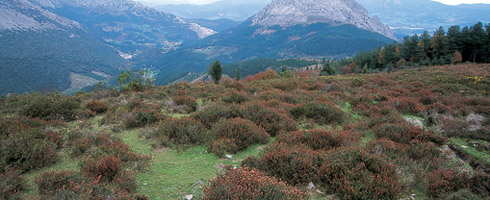
There are several areas of thickets made up of different species in the Urkiola Natural Park. They are found throughout the park and usually where the forest has been felled or on abandoned pastureland. Depending on the dominant species, the thickets can be divided into various types. When there is a great deal of heather, heathland is formed, when gorse dominates, it is known as a gorse thicket, when there are fern, a fern thicket and when there is a great deal of hawthorn, a hawthorn thicket, although they are often mixed together.
For example, you can often see a bed of white heather in the clearings and around the edges of the beech forests. This high heather forms a dense community on the north slopes of Saibi and Urkiolagirre. In the clearings and on edge of the forests under 600 m, bramble patches made out of blackberry bushes and other bushes are the prevailing species. The common fern, gorse and various species of heather can appear together on abandoned pastureland. This community appears on Saibi, on Urkiolagirre, on Pagozelai and between Zabalandi and Tellamendi.
Gorse thickets are to be found on the dry and sunny limestone rocky slopes, particularly near holm oak forests, such as on the Eskuagatx, Untzillatx and Aitz-Txiki mountains. Special mention should also be made of the hawthorn thickets on the rocky Aramotz mountain range, which is home to hawthorns and blackthorn that is a good food source for the wild animals, as those bushes produce edible fruit.
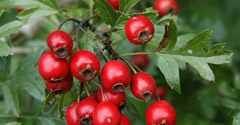
Deciduous bush or small tree, 3-10 m in height, with a great many branches and numerous thorns on the branches. The bark is greyish brown. The leaves are spatula in shape and sometimes are deeply divided, with serrations at the apex. It produces numerous white or pinkish flowers in clusters from April to May. The red fruit is small and round. Its fruit, which is rich in vitamin C, can be used to make a tasty jam. This bush has been widely used in popular medicine. They are used to make hedges around the farmsteds.
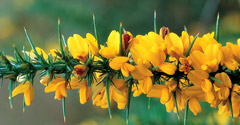
Very thorny bush with a lot of branches. It is 0.5-2 m high. It does not have any apparent leaves. The young branches are covered with fine down. It flowers between July and December and the flowers are yellow. The fruit is a small round legumbre. They form thick gorse thickets, often with heather and fern. They can be confused with U. europaeus which is very similar. The two species are very widespread.
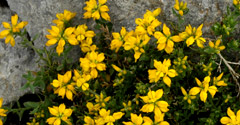
Cushion-shape bush, 10-50 cm high, with a long of branches. The branches are covered with thorns and the small and elliptic leaves only appear on the branches of the year. It flowers from April to July and the yellow flowers are in clusters at the end of the branches. The fruit is a 9-15 mm elliptic legumbre. It forms thickets on stony areas. It can be found on the slopes of Untzillatx and Aitz-Txiki.
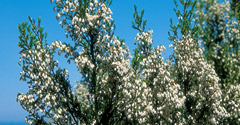
Perennial bush up to 1-4 m high, with numerous branches.. It has numerous small and linear leaves along the branches. It flowers from April to June and the flowers are small and white, bell-shaped and form dense clusters at the end of the branches. It is an endemic plant to the Iberian mountains. It can be found in the clearings and around the edges of the Saibi and Urkiolagirre beech forests. There is another very similar subspecies, E. arborea subsp. arborea, which grown in lower, warmer zones.
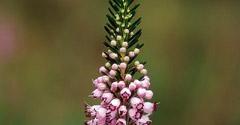
20-80 cm high bush, with numerous extended branches covered with small linear leaves. It flowers from July to October and the flowers are pink or whitish. They appear in compact long clusters, generally with several leaves overlapping. The flowers have purple anthers that extend beyond the corolla. It is the most common heather in the Park.
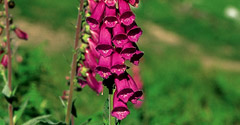
Large plant, 50-150 cm high, whose stem is covered with down and it has large oval-lanceolate leaves, which are whitish on the underside. It flowers from May to July. It has large pinkish-colour flowers that are bell-shaped and are arranged in elongated and dense clusters. It is found in heather bed, gorse thickets, forest clearing slopes at Txakurzulo, Asuntze, Saibi and Urkiolagirre. The foxgloves contains a substance known as digitoxin, that acts as muscular stimulant and is used to treat cardiac disease. However, it is very poisonous in high doses.
2006 - 2007 © Anteiglesia de Abadiño Town Council - All rights reserved